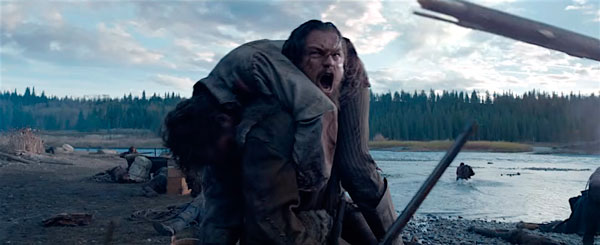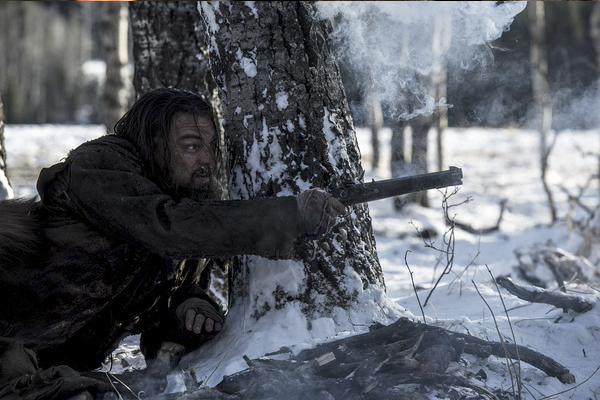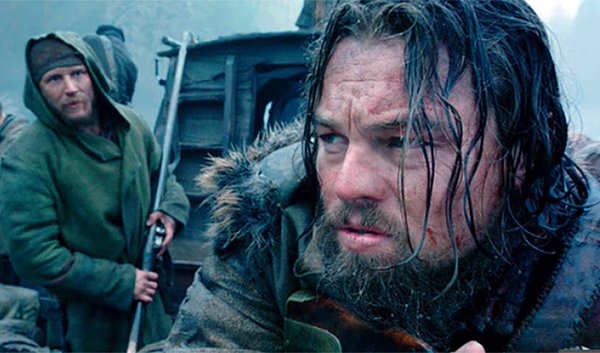The Revenant Review
Fresh off his Oscars for “Birdman,” Alejandro González Iñárritu makes a drastic change in scope and scale with “The Revenant,” a period survival drama set in the American frontier. But while the setting is wildly different, Iñárritu is still flexing a lot of his same filmmaking muscles. He really hones his unique cinematic stamp, thereby forcing most viewers to determine just how big of fans they are of his approach.
Working again with back-to-back Oscar winner Emmanuel Lubezki, Iñárritu has executed another visually immaculate picture worthy of a heap of technical awards. The challenge is the harrowing and brutal story serves as a sometimes painful contrast to the beauty of the craftsmanship.
Leonardo DiCaprio takes the plunge into cinematic hell with Iñárritu as Hugh Glass, the real-life early 19th century fur trapper and explorer. The film tells of his part in a fur-trading expedition and his legendary encounter with a grizzly bear, the man who left him for dead, and his subsequent pursuit of revenge.
Much of “The Revenant” is straightforward and grim. Iñárritu takes the viewer on a journey with his camera as the expedition is attacked from all sides by Arikara Native Americans in a series of gore-filled long shots. The rest of the film doesn’t shy away from portraying the shoot-first savagery of the place and time, and also man’s tumultuous relationship with nature. There are so many times when nature aggravates the situation but also times it alleviates it. Both nature and man prove to be merciful despite their brutality.
All these notions must be patiently synthesized from the film, which languishes compared to the pacing of similar survival stories. Iñárritu is far more interested in bringing poetry to the narrative than a gripping intensity. There are plenty of captivating moments, but also plenty of moments that exist as if solely to create a stunning visual portrait or add length to convey additional brutality to the circumstances of Glass’ predicament.
The role of Glass is as unglamorous as it gets, which is really what sets it apart from the rest of DiCaprio’s resume. Sure, it’s showy, but horrific-makeup-scars showy, not sickly-charismatic-hair-perfectly-parted showy. So much of what DiCaprio does is understated, even if Iñárritu’s camera pronounces that nuance.
Of the other roles, Tom Hardy makes for an excellent antagonist as Fitzgerald, the man who leaves Glass for dead (among other horrible things). The character exists primarily to embody the far extreme of greed and selfishness in this allegory about what motivates men, but Hardy puts his stamp on it to be sure.
Iñárritu and co-writer Mark L. Smith definitely aspire to a greater intellectual purpose for this film, but the delivery is anything but direct. Glass is constantly imagining his Native American wife throughout the story, for example, but it’s hard to connect with these sparse moments of visual poetry. Yet “The Revenant” is still affecting and thought-provoking, especially if you take the time to really actively engage in viewing it, which is easier said than done given the runtime and filmmaking style.
A true experience of a film, “The Revenant” is so rich in production values, and its best moments are when those values immerse the viewer and inform the viewer’s perspective on the story, rather than serve to create some ambiguous visual poetry. It’s not a complete package, but it’s an undeniable achievement.
4/5 Stars
The Revenant
Directed by Alejandro González Iñárritu
Written by Mark L. Smith and Alejandro González Iñárritu, Michael Punke (novel)
Starring: Leonardo DiCaprio, Tom Hardy







0 Comments
You can be the first one to leave a comment.